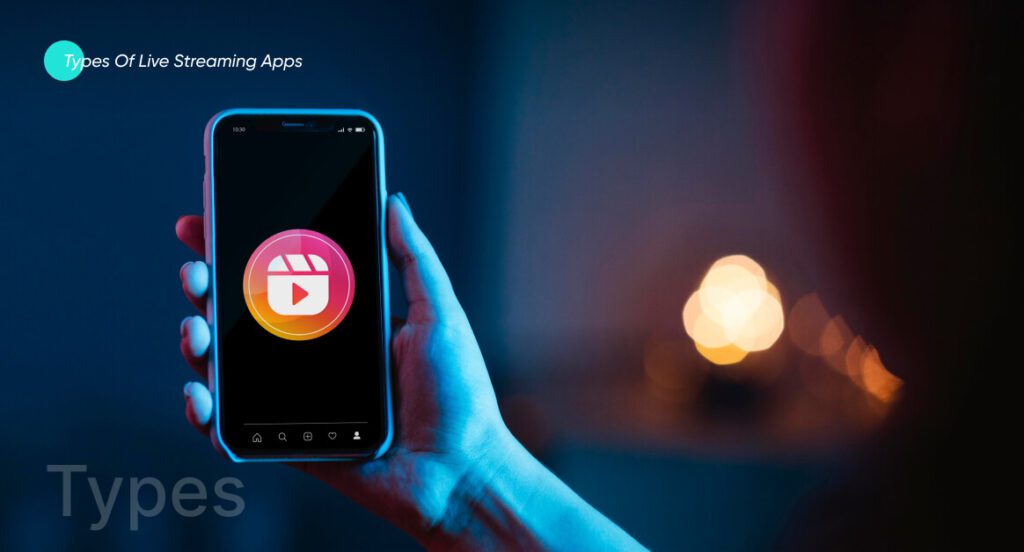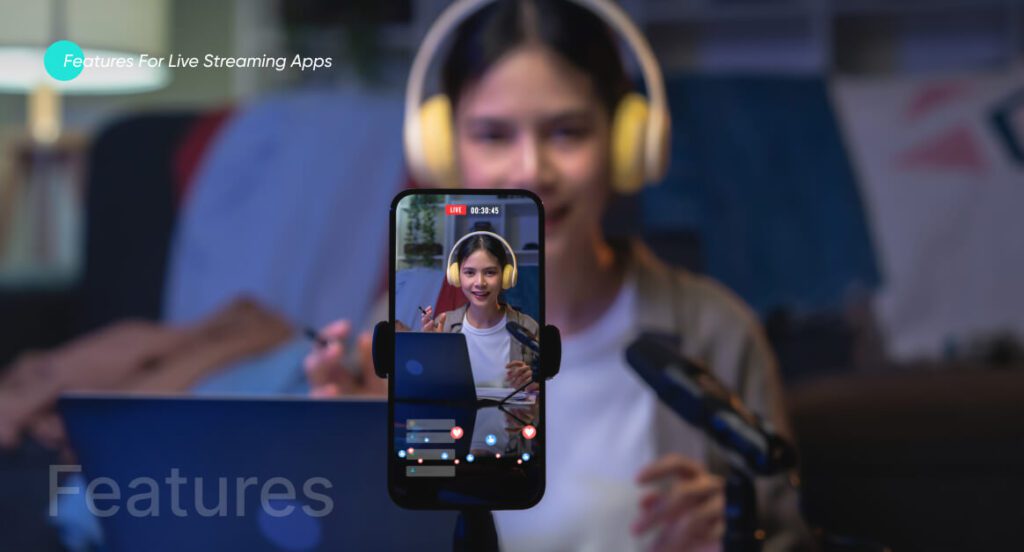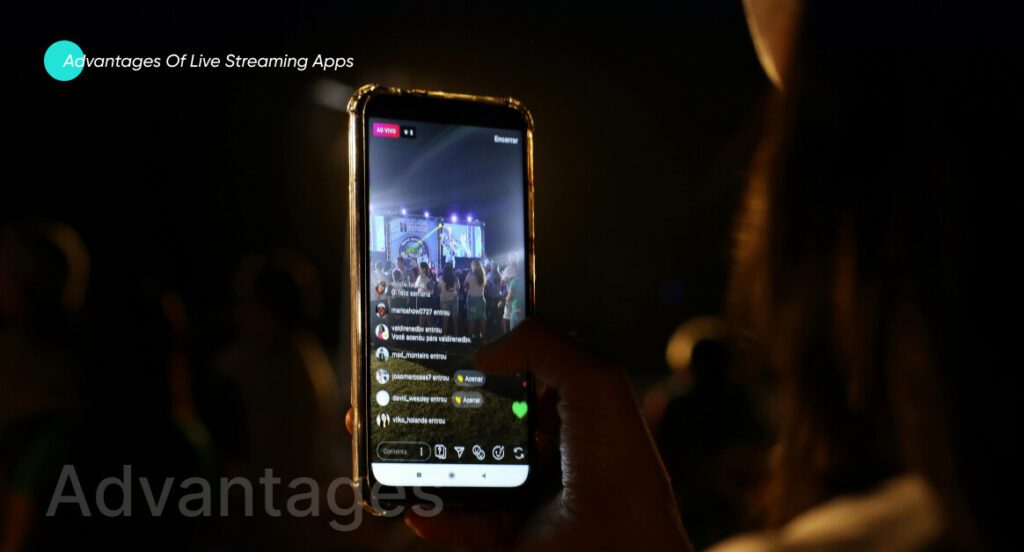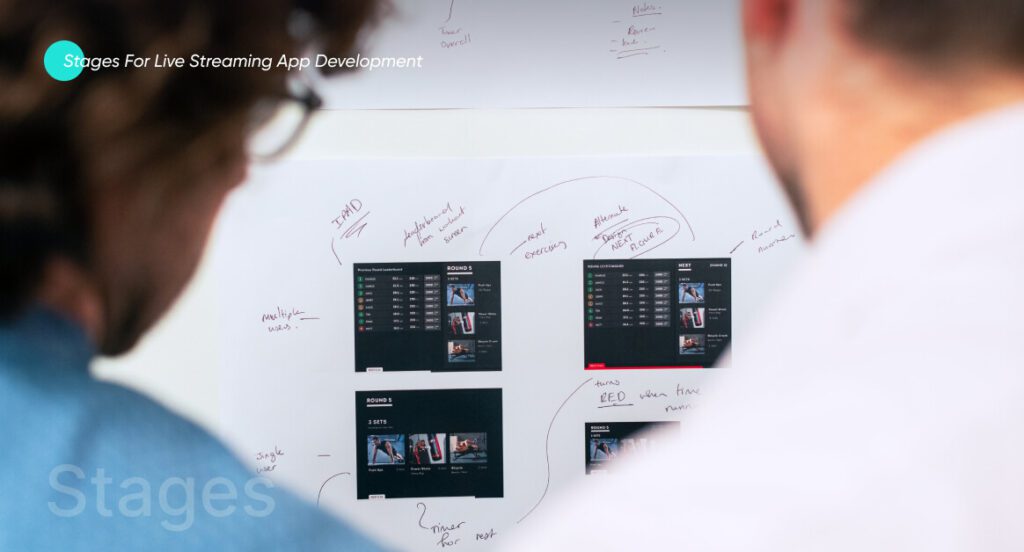Unlocking Live Streaming App Development
Live streaming apps are continuously gaining momentum. The COVID-19 pandemic spurred the demand for live streaming apps, and they became the leading form of entertainment for people. Live streaming apps allow users to record and broadcast video synchronically. Users can access and interact with social media influencers, favorite celebrities, industry leaders, and other renowned content creators in real time. Live streams can generate revenue through monetization strategies, such as ads, subscription programs, and partnerships. No wonder live streaming app development is on the rise. According to research, the live streaming app market is expected to reach $223.98 billion by 2028.
Don’t look further for live streaming app development specialists. See our Application Development Services ![]()
This growth also cultivates many opportunities for entrepreneurs and investors seeking to invest in the spp. With the market overflowing with live streaming apps, you must develop an app with unique features and functionalities to deliver top-quality live streaming content. This article explores the key process of live streaming app development while shedding light on their features and advantages.
Types of Live Streaming Apps

There are four primary types of live-streaming apps that you should know before starting the live-streaming app development process. Here is a detailed explanation of each type.
Live Broadcasting Apps
Live Broadcasting is the most commonly used type of app. These apps allow users to record and broadcast videos concurrently so that the users can watch the video in real time. These apps are popular with many social media influencers and celebrities, allowing them to gain massive followers. Examples of leading live broadcasting apps include Facebook Live, YouTube Live, Twitch, and Periscope.
Audio Streaming Apps
Audio streaming apps allow users to play and listen to music in real time, without having to download the music track. Users can enjoy listening to music, radio stations, podcasts, and other types of music without an internet connection. These apps overflow with vast volumes of audio data. Examples of popular audio streaming apps include Spotify, Apple Music, Amazon Music, and Pandora.
Video-on-demand (VoD) Streaming Apps
Video on Demand apps allow users to watch various movies, documentaries, TV soaps, and shows. Although users cannot download the video content, they can still rewind, fast-forward, or pause it at any moment. Users must buy subscription packages to access the video content on these streaming apps. Popular examples of VoD include Netflix, Amazon Prime Video, and Disney+.
TV Live Streaming App
TV live streaming apps allow users to watch their favorite shows online anytime. Unlike conventional TV, these apps allow users to pause, rewind, or fast-forward broadcast. Examples of TV streaming services include YouTube TV, Amazon Prime Video, Sling TV, and Hulu.
Who is Active on Live Streaming Platforms?

The following entities and people actively use live-streaming apps to promote their content.
Businesses
Live streaming services help businesses boost their promotion and increase client engagement.
Public Speakers
Public speakers, motivational speakers, wellness coaches, online trainers, and other professional experts use live streams to promote and distribute their content. They can also monetize these streams to generate income.
Influencers
Live streaming helps social media influencers smoothly broadcast content and engage with followers locally and internationally.
Gamers
Gamers utilize live streaming to broadcast their gaming sessions and interact with fellow gamers in the gaming community.
Essential and Advanced Features for Live Streaming Apps

Apps for live streaming come with myriad features. These features are meant to attract users, enhance user experience, and ensure a competitive edge over their rivals in the industry. Here is a list of essential and advanced features that can assist you in live-streaming app development.
User Registration
Registration is required for both content creators and users. Creators need to register to create channels and follow their preferred streamers. On the other hand, users can register through their email, social media accounts, and phone numbers.
User Profile
Users can create profiles by adding information such as name or nickname, age, location, gender, interests, profile pictures, etc. User profiles are crucial for personalization and social interaction within the streaming communities.
Live Streaming
Users can record and broadcast live streams to their followers and subscribers. Streaming protocols like RTMP (Real Time Messaging Protocol) ensure seamless video delivery. However, other protocols provide fast and superior video quality, such as RTMPS, HLS, DASH, and others.
Search
A search feature allows for quick browsing to look for the streamers that users are following or if they want to search for new channels. Apart from a simple search tool, this feature typically offers sorting options such as location, name, language, topic, popularity, and number of views.
User Gallery
A user gallery is a media library where you can find video content previously broadcasted by each channel you follow. Users can check streams and watch missed broadcasts.
Feed
The main page of your video streaming app displays the feed. The feed will display live streaming broadcasts, VODs (video-on-demand), and other content. Live streaming apps should allow users to personalize their feeds according to their interests and viewing history.
Donation System
A donation system is a paid communication between a streamer and the audience. When users donate, the message will be displayed on the stream. In addition to generating revenue from subscriptions, streamers can also enjoy donations as a source of income. You can either use third-party tools or even develop your donation system.
Stream Chat
Chatting is another crucial feature for live streaming apps. It allows streamers to communicate directly with their audience. Through chatting, content creators can get feedback from the audience, and streamers can also monetize the chat to generate income. The most popular technology for building the chat feature includes Twilio and Socket.io.
Security
Security breaches can lead to data leaks and compromise sensitive data in apps. Therefore, businesses must beef up their security with modern data security protocols like CCPA and GDPR. To save credit cards on your server, you will require PCI DSS (Payment Card Industry Payment Security Standard) protocol. However, storing minimum sensitive data on your app and using payment gateways for credit cards is still ideal.
Notifications
Missing an episode can thwart the excitement of watching series video content in live streaming apps. Therefore, you must add a notification feature during the live streaming app development. It can offer convenience to users to follow schedules and receive notifications. Likewise, users can receive notifications when a broadcast starts.
Advantages of Live Streaming Apps

Live streaming app development is continuously gaining momentum, offering multiple benefits to entrepreneurs/investors and users. Here are the key advantages of streaming apps.
Real-Time Broadcast
Live streaming apps enable quick, real-time interaction with streamers and audiences. Apart from watching the live broadcast – the audience can comment, leave feedback, and ask questions. It can nurture a sense of community and increase audience engagement.
Cost-Effective
Live streaming can also economically bolster your marketing strategies. Where conventional marketing strategies can cost you exorbitantly, marketing through live streaming can cost you only a fraction of that cost. Businesses can cost-effectively highlight their products and services on live streaming without opting for expensive promotion and advertising methods.
Content Diversity
Another key advantage of live streaming apps is that they allow businesses or individuals to broadcast a wide array of content. You can promote product launches, press releases, tutorials, Q&A sessions, and other types of video content. It allows businesses and creators to serve the varied interests and demographics of the audience.
Monetization Prospects
Live streaming apps provide an excellent and quick medium for monetization strategies to generate revenue. These strategies include ad revenue, which means generating revenue by broadcasting ads before, during, and after the streams. Through subscription models, the audience can pay for exclusive content. Similarly, creators can earn revenue through donations/tips, affiliate marketing, and crowdfunding on platforms like Patreon.
Optimized Engagement
Live streaming platforms provide a real-time and hands-on experience for content distribution, leading to increased audience engagement. Live streams initiate quick and direct communication between content creators and their audiences. Audiences can connect with streamers through live chat, comments, and reactions – ask instant questions, and receive instant replies. It strengthens engagement and also leads to enhanced brand loyalty.
Stages for Live Streaming App Development

Live streaming app development requires careful consideration and planning. There are critical stages involved in the creation process. Here is a thorough explanation of these stages.
Define your target audience and pick your niche.
Before embarking on the live streaming app development journey, you must analyze the market and review your competitors’ offerings. Similarly, you can conduct interviews with your potential audience to assess the problems they face. You can also decide what content will be streamed on the app. It will assist you in defining your target audience and developing a unique idea.
Choose a monetization method.
You will choose an appropriate monetization strategy for your live streaming app at this stage. Scrutinize different monetization strategies and check which is most suitable for revenue generation. You can sell your app entirely as a paid app, let users pay a monthly fee under a subscription model, or run advertisements to generate income.
Select your Development Team
For building a quality app, you must choose a competent development team to accomplish your app project. You can either assemble an in-house team or entirely outsource your project, depending on your budget and resources. Choose a team with extensive expertise and deep app development knowledge, and check for the team’s reputation and portfolio. Finally, ensure that the team stays in touch to update you with project developments and deliver the project on time.
Create UI/UX Design
UI/UX designers work to create wireframes and prototypes to test the usability of your live streaming app. Designers should prioritize creating a clean and elegant design that engages the user. A less flashy and simple design will appeal to users and help them quickly navigate the app.
Build Your MVP
Building an MVP version of your app containing essential features is crucial. An MVP version could save you money. It will help get your target audience’s feedback and accordingly make the required changes. An MVP can act as an ingenious tool to help you minimize losses if your app fails to garner the audience’s attention.
QA and Launch
In this stage, your Quality Assurance team will perform rigorous checks to eliminate bugs and other software issues. Once your QA team approves the app for testing, your live streaming app is ready for deployment on the app store. Nevertheless, you should continually collect feedback and release updates to improve the app.
Live Streaming App Development Cost

You will require an extensive budget for the live-streaming app development process. An advanced feature-rich app is likely to cost you thousands of dollars. As each app project has its own specific set of goals and features, there is no single universal cost for a live streaming app development. A basic version of the live streaming app can be somewhere between $50,000 to $80,000. On the other hand, an advanced version of the live streaming app can range between $300,000-$500,000.
See our latest relevant exploration How to Evaluate Mobile App Development Costs? ![]()
FAQs
How do I ensure high-quality streaming?
You must implement streaming protocols, ensure high-quality video streaming even for users with low bandwidth, and use adaptive bitrate streaming (ABR) for high-quality, seamless content delivery.
What technologies are typically used for live-streaming app development?
You will require technologies such as Swift (iOS) and Java/Kotlin (Android) for mobile apps. You will need Node.js, Ruby on Rails, and Django for the backend. For video streaming, you require WebRTC, HLS, and RTMP; for chat and messaging, you need WebSocket and Firebase Cloud Messaging (FCM).
How long can it take to develop a live-streaming app?
The development of a live-streaming app can take a few months to a year, depending on the project’s complexity, features, and other specific requirements.
Can you name some of the leading apps for live streaming?
Popular live streaming apps include Facebook Live, Instagram Live, TikTok Live, YouTube Live and Twitch.
Gohar is a seasoned IT writer specializing in leading technologies. He holds a Diploma and Bachelor's degree from the University of London, with professional experience spanning over five years in the IT sector. His expertise involves a keen focus on mobile applications, web apps, blockchain, content management systems, e-commerce, and fintech. Beyond the professional field, Gohar is an avid reader and reads extensively about emerging and innovative technologies.